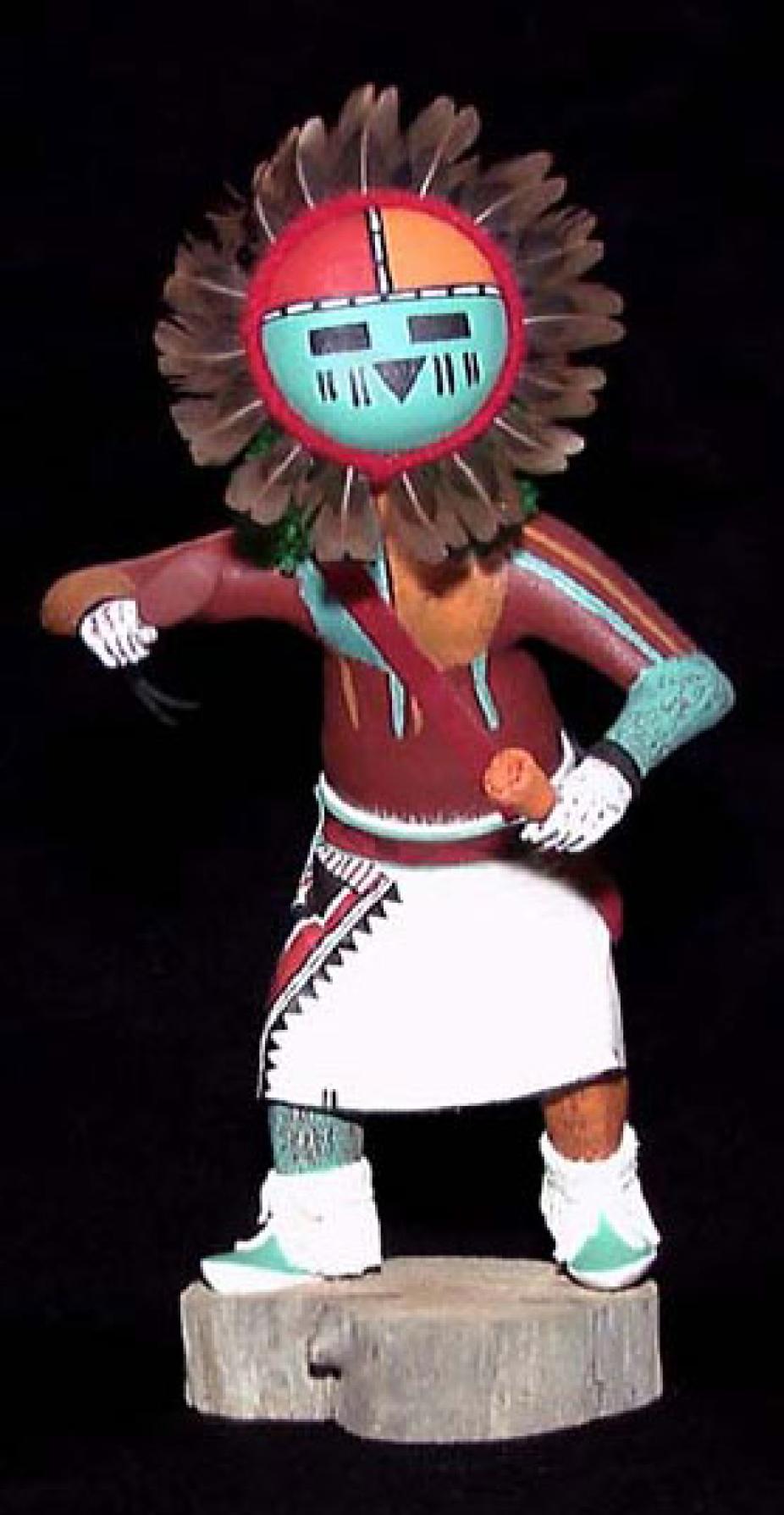Hopi Tawa Kátsina
Our knowledge of the ancient Puebloan astronomical practices is greatly limited by the fact their civilization left no detailed written record. Lacking such, one can still examine the astronomical practices of their descendants, the modern Pueblo people, who still live in Northern Arizona and New Mexico. The value ascribed by Pueblo culture to the "way of the ancients", as well as its remarkable resilience to external influences, offers some hope that contemporary Puebloan astronomical practices may still resembles in important ways that of their ancestors. It has been argued that this might be particularly true of the more isolated and reclusive pueblos, such as on Hopi Mesa and at Zuñi.

Hopi Sun deity, Tawa Kátsina.
In present-day pueblos, Sun watching is the responsibility of the Sun-priest. He typically carries out his observations at sunrise, from an inconspicuous location located not far from the pueblo. Horizon observation is the most common technique used. The primary purpose of Sun watching is the setting of the planting calendar, as well as religious ceremonies, in particular around solstices. The Sun priest carries out both anticipatory and confirmatory observations, the former being executed about two weeks before the date being anticipated.
The relative simplicity of solar observing practices does not carry over to Sun-related ceremonial activities, which tend to be rather elaborate. The Hopi Sun deity image, the Tawa Kátsina, is one of the many representations of spiritual counterparts to the physical world in the Hopi Kátchina cult. "Kátchina" is the anglicized form of the original Hopi name "Kátsina". The Hopi practice recognizes the Sun as the creative force for all living things. The Tawa Kátsina is one of the Sosoyohim Kátchinas used together with the Kátchinas representing the Chiefs, Guards, Clowns, and Runners seen as the primary deities in ceremonial dances and plays.
The driving ritual in the Kátchina cult is the series of annual ceremonies held to obtain rain and climate for the Hopi gardens. These ceremonies begin with the Soyala ritual at the winter solstice in December and continue in a series of monthly rituals in each village until the Niman or Home Dance in late July. This series represents the return of Kátchinas to earth at the winter turning point of the Sun and their visits to the Hopi villages from December to July. The Hopi Home Dance in July marks the return of the Kátchinas to the clouds above the San Francisco Peaks in Northern Arizona near Flagstaff. The timing of these and other ceremonies is established by the Sun-priest on the basis of horizon observations of the Sun (see slide 4, Horizon Calendars). Hopi deities are represented by dancers in elaborate Kátchina costumes in these ceremonies. Kátchinas carved from cottonwood roots originated as gifts from village members to their children on their admission to the Kátchina cult.